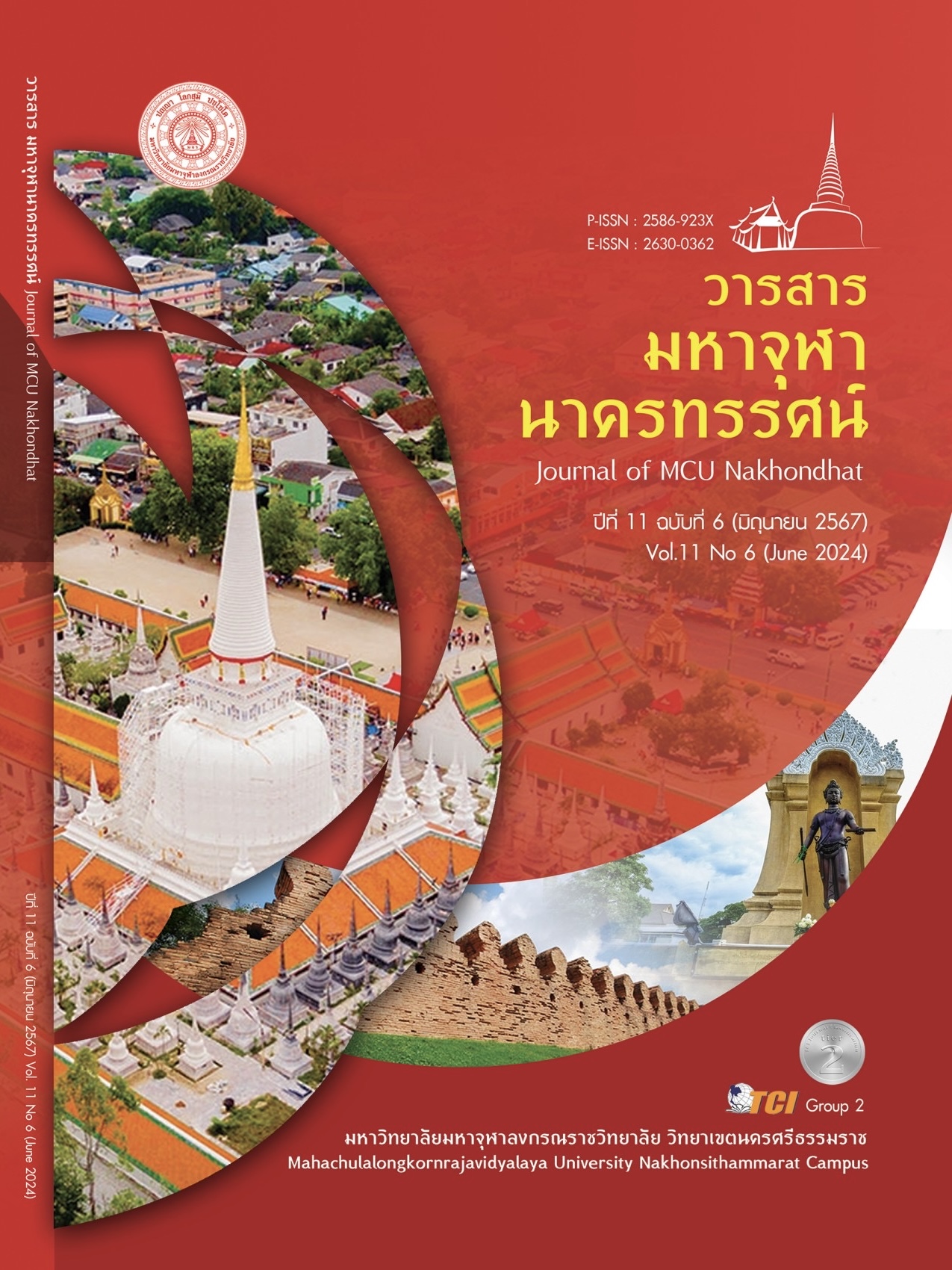RATE OF SHIVERING AND FACTORS RELATED TO SHIVERING PATIENTS AFTER ANESTHESIA, KOH SAMUI HOSPITAL
Main Article Content
Abstract
This research aimed to study rate of shivering and factors related to shivering patients after anesthesia when moving to the recovery room by using cross-sectional analytical research design. The sample group consisted of 350 patients, aged 18 years and over who receiving general anesthesia or reginal anesthesia or both together and was monitored in the recovery room. The samples were selected by purposive sampling. Research instruments were shivering, and factors related to shivering record form. Data were analyzed by descriptive statistics (number, percentage, mean, standard deviation) and Chi-square test/Fisher’s exact test. The results found that 32.6% of patients after receiving anesthesia and moved to the recovery room occurred shivering. Factors within the patient including patient's body temperature before entering the operating room and factors from surgery, including the type of surgery, surgery time, amount of fluid received intravenously, and blood loss related with shivering in patients after receiving anesthesia by statistically significant (p-value < 0.01). Factors within the patient including gender, age, body index, congenital disease, and factors from surgery, including period of surgery, and surgery department were not related with shivering in patients after receiving anesthesia when moving to the recovery room. According to the results, recovery room/surgery room nurse should be monitored and provided with standard care and especially the factors that were related to the occurrence of shivering in the study.
Article Details

This work is licensed under a Creative Commons Attribution-NonCommercial-NoDerivatives 4.0 International License.
References
กัญชญาณ์ จริงจิตร. (2564). ปัจจัยที่มีความสัมพันธ์กับภาวะหนาวสั่น (Shivering) ในผู้ป่วยหลังได้รับการระงับความรู้สึกแบบทั่วไปในห้องพักฟื้น ของโรงพยาบาลตรัง. วารสารโรงพยาบาลมหาสารคาม, 18(1), 13-24.
เกษร พั่วเหล็ก. (2560). ปัจจัยที่มีผลต่อภาวะหนาวสั่นและอุณหภูมิต่ำเพื่อการพัฒนาโปรแกรมอบอุ่นร่างกายในผู้ป่วยผ่าตัดที่ได้รับยาระงับความรู้สึกทางช่องน้ำไขสันหลัง โรงพยาบาลหนองบัวลำพู. วารสารการแพทย์โรงพยาบาลอุดรธานี, 25(3), 294-305.
จินตนา ดีป้อม. (2562). ปัจจัยที่มีความสัมพันธ์กับการเกิดภาวะอุณหภูมิร่างกายต่ำในผู้ป่วยผ่าตัดที่ได้รับการให้ยาระงับความรู้สึกแบบทั่วร่างกายในโรงพยาบาลกุมภวาปี จังหวัดอุดรธานี. วารสารการพยาบาล สุขภาพและการศึกษา วิทยาลัยพยาบาลบรมราชชนนี อุดรธานี, 2(3), 3-11.
ชวิภา พิสิฏฐศักดิ์, และคณะ. (2559). อุบัติการณ์และปัจจัยในการเกิดอุณหภูมิกายต่ำภายหลังจากการผ่าตัด. วิสัญญีสาร, 37(2), 93-103.
ญาณนันท์ รัตนธีรวิเชียร. (2560). อุบัติการณ์และปัจจัยทำนายการเกิดภาวะอุณหภูมิกายต่ำของผู้ป่วยหลังผ่าตัดในห้องพักฟื้น. Journal of Nursing Science, 31(4), 34-44.
ปรก เหล่าสุวรรณ์. (2563). ภาวะวิกฤตทางวิสัญญีวิทยา. (พิมพ์ครั้งที่ 1). กรุงเทพมหานคร: จุฬาลงกรณ์มหาวิทยาลัย.
ปรเมศวร์ จิตถนอม และนรลักษณ์ เอื้อกิจ. (2561). ผลของโปรแกรมการให้สารน้ำอุ่น และการให้ความอบอุ่นร่างกาย ร่วมกับการให้ข้อมูลอย่างมีแบบแผนต่ออาการหนาวสั่นในหญิงที่มารับการผ่าตัดทางนรีเวชที่ได้รับการระงับความรู้สึกด้วยวิธีฉีดยาชาเข้าช่องน้ำไขสันหลัง. วารสารการแพทย์โรงพยาบาลจุฬาลงกรณ์, 1(13), 784-797.
ประไพ ผลอิน, และคณะ. (2564). ปัจจัยที่มีความสัมพันธ์กับภาวะแทรกซ้อนจากยาระงับความรู้สึกแบบทั่วร่างกาย ของผู้ป่วยหลังผ่าตัด. วารสารการพยาบาลและสุขภาพ สสอท, 3(1), 32-47.
ปิยมาน งามเจริญรุจี. (2564). การใช้ผ้าห่มฉุกเฉินเพื่อช่วยลดอุบัติการณ์การเกิดภาวะหนาวสั่นหลังการผ่าตัด. วารสารแพทย์ เขต 4-5, 40(1), 125-135.
รัตติพร ครุฑป่า, และคณะ. (2563). ปัจจัยที่มีผลต่อภาวะอุณหภูมิกายต่ำของผู้ป่วยหลังผ่าตัดที่ได้รับยาระงับความรู้สึกในห้องพักฟื้น. เรียกใช้เมื่อ 1 พฤษภาคม 2567 จาก https://nrh.nopparat.go.th/research/public/view/pdf/66_2.pdf
โรงพยาบาลเกาะสมุย. (2566). จำนวนผู้ป่วยที่ได้รับยาระงับความรู้สึก โรงพยาบาลเกาะสมุย. สุราษฎร์ธานี: โรงพยาบาลเกาะสมุย.
วนิดา ศรีสถาน. (2560). ปัจจัยที่มีผลต่อภาวะหนาวสั่นที่ห้องพักฟื้นในผู้ป่วยที่ฉีดยาชาเข้าไขสันหลัง. เรียกใช้เมื่อ 1 พฤษภาคม 2567 จาก https://hpc2appcenter.anamai.moph.go.th/academic/web/files/2563/research/MA2563-001-01-0000000283-0000000214.pdf
ศิริวรรณ จิรสิริธรรม. (2560). ตำราวิทยาศาสตร์พื้นฐาน วิสัญญีวิทยารามาธิบดี. (พิมพ์ครั้งที่ 1). กรุงเทพมหานคร: ไอเดีย อินสเตนท์ พรินทิ้งการพิมพ์.
สมหมาย ทองมี. (2561). ปัจจัยที่มีความสัมพันธ์กับภาวะหนาวสั่นหลังได้รับยาระงับความรู้สึก ของผู้ป่วยหลังผ่าตัดในห้องพักฟื้น. วารสารวิชาการแพทย์เขต 11, 32(4), 1237-48.
สำนักงานกองทุนสนับสนุนการสร้างเสริมสุขภาพ. (2566). การระงับความรู้สึกระหว่างการผ่าตัด. เรียกใช้เมื่อ 1 ธันวาคม 2566 จาก https://www.thaihealth.or.th/
สุกัญญา องอาจ. (2561). อุบัติการณ์และปัจจัยที่สัมพันธ์กับภาวะหนาวสั่นในผู้ป่วยที่ได้รับการระงับความรู้สึกแบบทั่วตัวหรือแบบเฉพาะส่วน ในโรงพยาบาลดำเนินสะดวก จังหวัดราชบุรี. วารสารหัวหินสุขใจไกลกังวล, 3(2), 116-126.
สุทิวา สุริยนต์. (2561). ประสิทธิผลของการใช้แนวปฏิบัติทางคลินิกสำหรับการป้องกันภาวะอุณหภูมิกายต่ำ ในผู้ป่วยผู้ใหญ่ที่ได้รับการผ่าตัดใหญ่และการระงับความรู้สึกทั่วร่างกาย โรงพยาบาลแพร่. ใน วิทยานิพนธ์มหาบัณฑิต สาขาวิชาการพยาบาลผู้ใหญ่. มหาวิทยาลัยเชียงใหม่.
Deepom, J. et al. (2019). Associated factors of Hypothermia during General Anesthesia. Nursing Health and Education Journal, 2(3), 1-11.
Lopez, M. B. (2018). Postanaesthetic shivering from pathophysiology to prevention. Rom J Anaesth Intensive Care, 25(1), 73-81.
Paavolainen, L. & Wallstedt, J. (2018). Post-operative complications of general anesthesia: A recorded video presentation. in Bachelors thesis. Jyväskylä University.
Yamane, T. (1967). Statistics: An Introductory Analysis. London: John Weather Hill,Inc.


